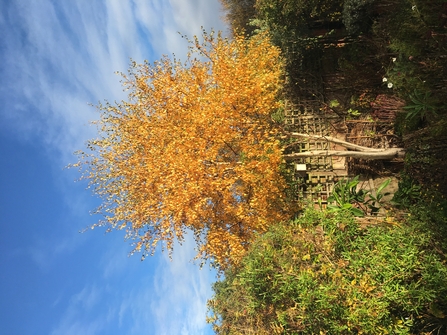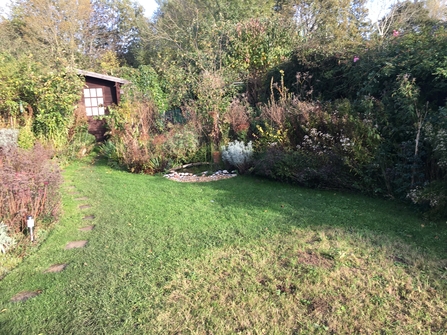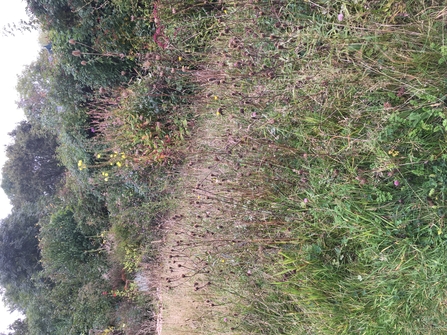Time flies! Summer merged into autumn as we started to see subtle changes in the colours of flowers. The foliage takes on less vibrant hues this time of year, though they’re just as attractive in their own way. The sedums that were covered in bees and butterflies are now a deep wine red, for example.

© Andy Sutton
We often see more summer migrants in the garden now, as they top up their fat reserves, especially blackcaps and chiff chaffs, flitting among the birch and in the borders. Overhead we have seen sand martins probably heading home from Testwood Lakes, and the occasional swallow. The swifts have been gone since early August.
We are seeing red kites over the garden and also buzzards have become regulars, usually mobbed by either herring gulls or crows.

WildNet - Clive Nichols
We had something of an Indian Summer this year so there was still plenty of insect activity amongst the late-flowering plants such as evening primrose, cosmos, allysum and verbenas. Even now, we are still getting visits from butterflies, a highlight being a bright brimstone and several red admirals looking for some nectar and searching for somewhere to hibernate.

© Andy Sutton
To keep pollen and nectar supplies available for as long as possible throughout the year, now’s the time to plant bulbs such as crocus, native daffodils and aconites for next spring. Tulips can be planted later. Also fritillaries are good to plant now in damp sites. We put crocus and daffodils in the meadow, which is looking rather bereft now after being mown in mid-September.
We usually let the cuttings fly out from the mower, rake it about and toss them to allow any seeds to fall, then finally take up and put on the compost heap.
Most of our other plants are grown from seeds or cuttings. A clump of Winter-flowering heathers is always a good idea to have in your garden as insects, especially bumblebees are surprisingly active during mild spells in the Winter months.

© Andy Sutton
We tend to leave herbaceous borders with their seed heads uncut as habitat until around mid-February, then clear it up and do any lifting, moving, or dividing as new growth is appearing. Then a good layer of home-made compost is applied.
Our next job this month is to clean out our bird boxes to get ready for the new breeding season.
I’m looking forward to bringing you a winter update on our garden and sharing with you our plans for the coming year. We’re looking at shrubs to plant and wildflowers for beds and borders.
And a plea to all gardeners - please use only peat-free compost! Peat used in our compost is dug out of wild places, damaging some of the last remaining peatlands in the UK and overseas. This process also releases carbon into the atmosphere, accelerating climate change.

© Andy Sutton
Andy and Gill Sutton
Andy Sutton lives in Totton and is now retired from a career in agriculture and horticulture. Before the pandemic, Andy was helping a local primary school with their wildlife projects and looks forward to returning to the project soon.

